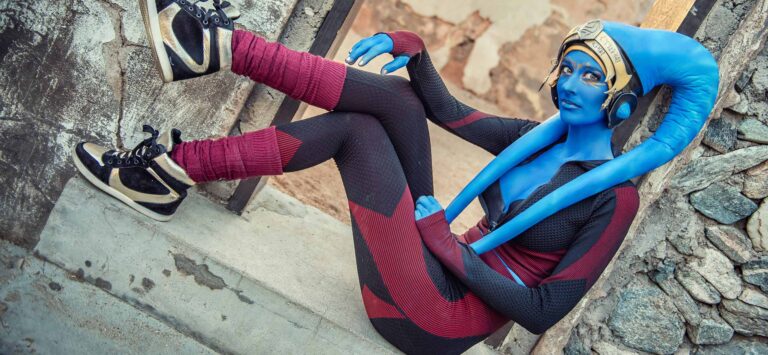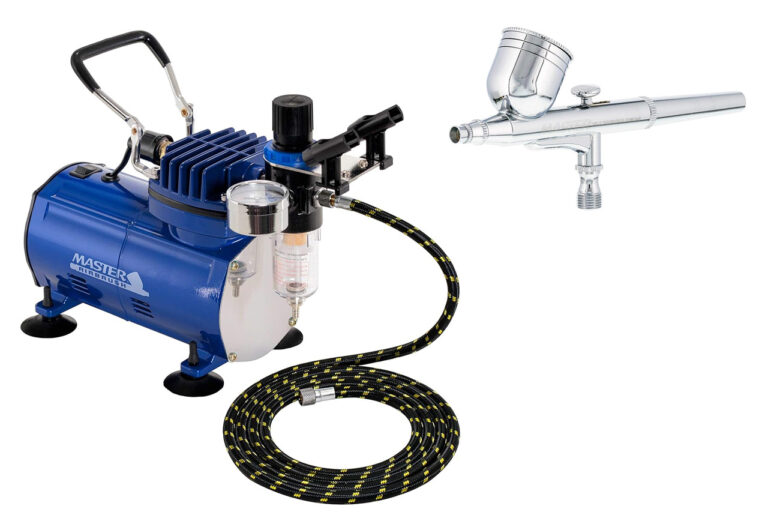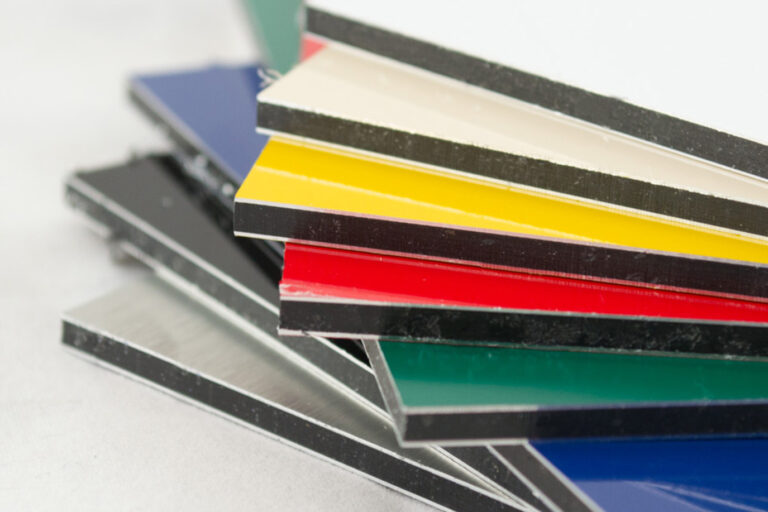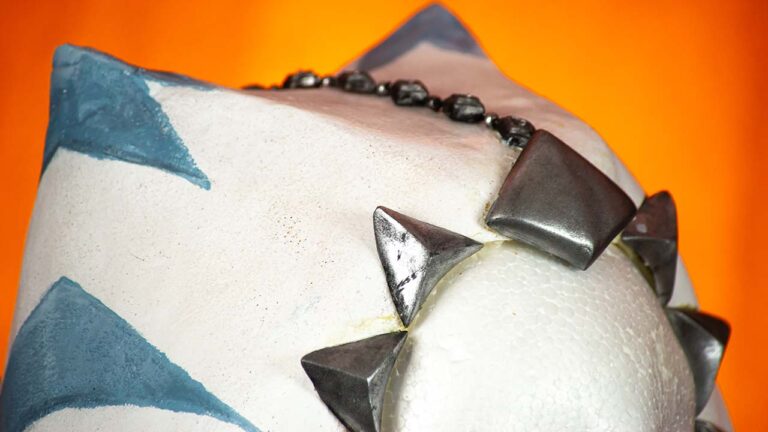My favorite cosplay glues for foam, sintra, fabric, skin and everything in between…!
Let’s be honest – in cosplay, one of the biggest and most constant questions you’re going to face, whether you’re a seamstress, a propmaker, or a SFX artist, is
How do I make this thing stay attached to that thing?
After a decade and probably hundreds of different glues tried, I’ll say I have my favorites. Here’s my top six favorite cosplay glues across all of the cosplay disciplines, with an honorable mention at the end!
Links in this article are affiliate links, meaning I may make a (SMALL) amount of money off of any purchases. Thanks for your support! <3

Barge Contact Cement
My number one go-to cosplay glue. If I can glue it with Barge, I’m gonna glue it with Barge. Barge is a contact cement that’s decently available at local ACE stores and in larger quantities online. Its hold is decently durable and its range is also pretty broad. The one downside to Barge is that it stinks, so using it in a well ventilated area is a must.
To use Barge, simply apply a thin layer to both sides of what you’re gluing together. Let it get tacky (so it’s no longer shiny) and then press the sides together. Do not adjust once you press them together or you’ll have to restart the process. For fabric or super porous surfaces, I will often apply several layers to let the glue “soak in” before applying the other side.
Pros:
- Can be used on foam, plastic, metal, fabric, resin, and just about everything in between. On more non-porous surfaces such as metal and resin it can be peeled off, but it takes some force to do so.
- Relatively inexpensive and relatively accessible.
Cons:
- Smelly, can make you sick, use outside or in well-ventilated area.
- Can be difficult to precisely apply as it is goopy.
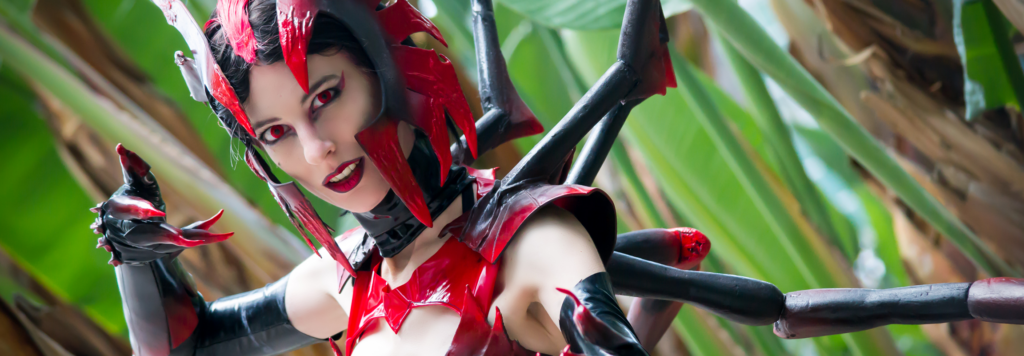
Hot Glue
Okay, okay, I know we joke about how poor quality cosplays are literally “just hot glued” together, but let’s not get it twisted. Hot glue is an exceedingly useful glue, and if you buy the higher quality glue sticks with a high temp gun the hold can be quite strong. Not to mention hot glue is cheap and accessible even at most grocery stores. Hot glue can also be used to add raised details to items, to fill voids, and to mask or cover fraying or sharp ends. Hot glue is awesome, and while it shouldn’t be used as a primary hold, it’s my go-to for small details or items that I want to be removable – such as the visors in my Mandalorian helmets.
To use hot glue, you’ll need electricity. Remember to let your gun heat up fully and try not to glue too much at once because you’ll want to give your gun time to melt the new glue. To avoid “stringies” you can “wipe” the tip off on the material you’re gluing or have something like a popsicle stick that you “end” on to wipe off.
Pros:
- Extremely cheap and accessible, available just about everywhere and has the smallest monetary use point.
- Non-toxic, non-stinky, can be used safely in enclosed spaces and on things that will be against the skin with no health concerns.
- Useful as more than just a glue.
Cons:
- Hold is not flexible meaning it can easily break. I would not consider hot glue attachments “permanent”. They can be peeled away from almost all materials.
- May not be stinky but if you’re not careful you’re gonna burn yourself.
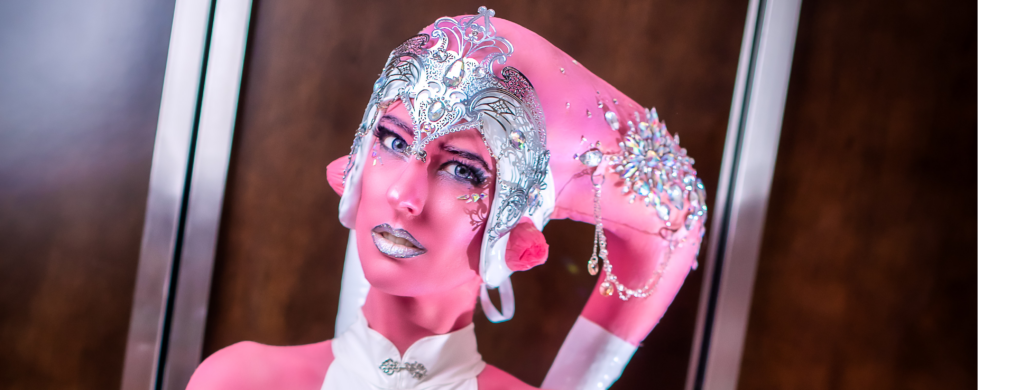
CA Glue / Super Glue
There are actually a couple of formulas that are all grouped underneath the header of “super glue”, but my favorite is CA glue or cyanoacrylate glue. CA glue is one of the only glues easily available that will bond to silicone, making it a go-to for SFX or silicone-prop makers. It is also fairly available in small quantities, though makers will find you go through those tiny tubes FAST. Larger bottles are available online and come with brushes and tips for precise application.
To use, simply apply a dot of CA glue to where you want to adhere and press and hold the two sides together. I recommend clamping them for about five to ten minutes if at all possible to ensure good adherence. There are accelerators you can buy to make the glue cure even faster, to an almost instant bond.
Pros:
- Small quantity tubes are readily available. Using large quantities however you’re going to find the price point runs up, so I recommend buying larger bottles if you’re going to be using it a lot.
- Can be used in small areas as it is non-smelly.
- Has a truly massive range of materials that it will adhere to.
Cons:
- Expensive in large quantities.
- Will also adhere to your skin, meaning you can accidentally glue Yourself instead of whatever it is you were intending to glue.

E-6000
E6000 is a glue that I feel like more people would find useful if they gave it a go. It has several big downsides – such as being toxic especially in smaller spaces and taking ten to fifteen minutes to start to adhere – but the upsides to this glue are many. When fully cured, it has a flexible, strong hold especially when used with foam or fabric, which is where it really excels. In addition, it dries clear and is thick enough to be able to apply it precisely without it running or dripping.
To use, apply a dot (or line) of E6000 to one side, then press the two sides together. I recommend either clamping or taping the pieces together if gravity alone won’t hold them in place, then leave for a solid half an hour to fully cure. You can clean off any excess E600 with a toothpick or bit of spare foam during this time.
Pros:
- Dries clear and flexible, which means that it creates a strong, permanent hold that is also not glaringly obvious.
- Tubes are quite large and the amount of glue needed is small so the price point for this glue is fairly low.
- It is thick enough to fill voids and to be placed in areas where another glue might run or dribble.
Cons:
- Incredibly smelly, can make you sick if you are not using it in a well-ventilated area. I recommend a respirator if you are using it for a long period of time or for a very large build, even if in a well-ventilated area.
- Takes a bit to cure, so needs to be propped up or clamped or otherwise held in place.

DevCon Plastic Welder
No Sintra armor or propmaker’s list of best cosplay glues would be complete without a mention of our staple glue, DevCon. The specific kind I use is DevCon Plastic Welder, which is the absolute best thing for making sure thermoplastics go together and never come apart. I’m serious, when my armor breaks, it’s never along the glue line. This stuff is STRONG. It can be hard to find, however, and has a very niche usage – it won’t work for foam or fabric, only resin and plastic. But if I’m building armor, you better believe I’m using this glue.
To use, thoroughly mix the two parts together equally, then apply to the surface you’re gluing. Press the other side into place and then either clamp or tape together. You can wipe away excess glue this time or add more of it along the seamline to fill in and reinforce the area – great for making “welding” lines. Let sit for half an hour before applying any tension and be careful with it for the first 24 hrs.
Pros:
- The strongest hold you can get for plastic and resin, hands down. You will never get glued-together pieces apart.
- A small amount will go a long ways, so one tube will get you a lot of parts glued together.
- Extremely thick so can be applied very precisely, and also used as a void filler/reinforcement.
Cons:
- Can be hard to find the specific brand and kind I prefer.
- Cure time means the pieces need to be clamped or taped together and need a fully day to cure before being painted or having stress applied to them.
- It’s stinky! Surprise surprise. Use a respirator and leave in well-ventilated area to off-gas.

ProsAide
This isn’t a surprise to any of my SFX artists out there – Prosaide is hands down the best and safest hold you can get for many prosthetics including resin and latex. It’s formulated for medical usage so it doesn’t cause reactions and has a remover so at the end of the day you’re not stuck being sticky.
This is the only glue on this list that is safe to use directly on your skin, especially all day at conventions.
But hold on, that’s not all…
Anyone who’s ever cosplayed some of the more, ahem, fabric-light characters out there has run into the problem of “how do I make (x) garment stay in place”? For example, Mileena’s bodysuit has a straight down front cut, which works for video games but is prone to npple-freeing movements in real life. My go-to for any sort of garment placement is ProsAide. I use it to hold up gloves, to hold up thigh socks, to keep boobs in place, you name it, I’ve used it for holding cosplays where I want them to stay.
To use, you’re going to treat it like any other contact cement. Clean the skin with a bit of alcohol (makeup underneath will weaken the hold), then apply a thin layer to the skin and to the thing you’re gluing to the skin. Let those two sides get tacky (not shiny) then press into place and it should instantly hold. If you need to readjust you’ll want to pull them apart and start all over. If you’re holding down a bit of fabric, I recommend coating that part of the fabric with a thin layer of latex before gluing to create a good, strong ‘anchor’ point.
When you’re done, use the remover or some eye make-up remover to cleanse any residual stickiness.
Pros:
- Safe to use on your skin all day. I have never met anyone who’s had a reaction to ProsAide, which is more than I can say for the various glues that constitute “spirit gum”.
- Nontoxic and non-stinky, can be applied with a cotton round, brush, or even the handle end of a make-up brush.
- Comes in a liquid form and a cream form. The liquid form is great for most jobs, but if you need to build up a prosthetic or mask a seamline, the cream form is perfect for that.
Cons:
- Needs to be specially ordered, I don’t know of many places that carry it in stock.
- Sweat and water will weaken the hold.
- Once the hold is broken (ie a prosthetic is pulled off) it won’t really “reattach” without cleaning the area and reapplying glue, so if something happens at con or an event you may be stuck with a fallen-off prosthetic.
- Expensive, unfortunately.

Honorable Mention: Duct Tape
Yeah, yeah, yeah, I know, we’re quality cosplayers, we don’t just duct tape things together. But real talk, duct tape is a really versatile attachment method, is nontoxic and easy to use, instantly adheres, and can be cut to very specific shapes.
I don’t use duct tape as my primary method of attachment, but I absolutely always have a roll in my armor kits as an emergency fix, and often I will use duct tape as a reinforcement or a masking area. Especially if I want to be able to remove the attachment at some point – for instance, in the underside of my gauntlets where I have batteries installed, I will cover that area with duct tape to keep it all contained, but allow me to peel away the duct tape to replace the batteries when needed.
Plus some of the black, heavy duty duct tape will HOLD. This stuff should be in every cosplayer’s arsenal!
Pros:
- Cheap af. And readily available.
- Instant adherence, as well as a very controlled application because you can cut it to size.
- Comes in black, so doesn’t need to be painted in many situations.
- It was in the Star Wars movies, it’s Star Wars canon, and you can’t tell me otherwise.
Cons:
- It’s not a permanent hold.
- Depend on it too often and then you’re just that cosplayer that tapes things together, and no one wants to be THAT Cosplayer.
Well there you go… my six favorite cosplay glues, and one honorable mention. What do you think, are there any glues that I missed? Anything that you would absolutely keep in your arsenal that you believe other cosplayers would benefit from? Let me know, I love to hear from you!
And most importantly…
Cosplay on! <3






